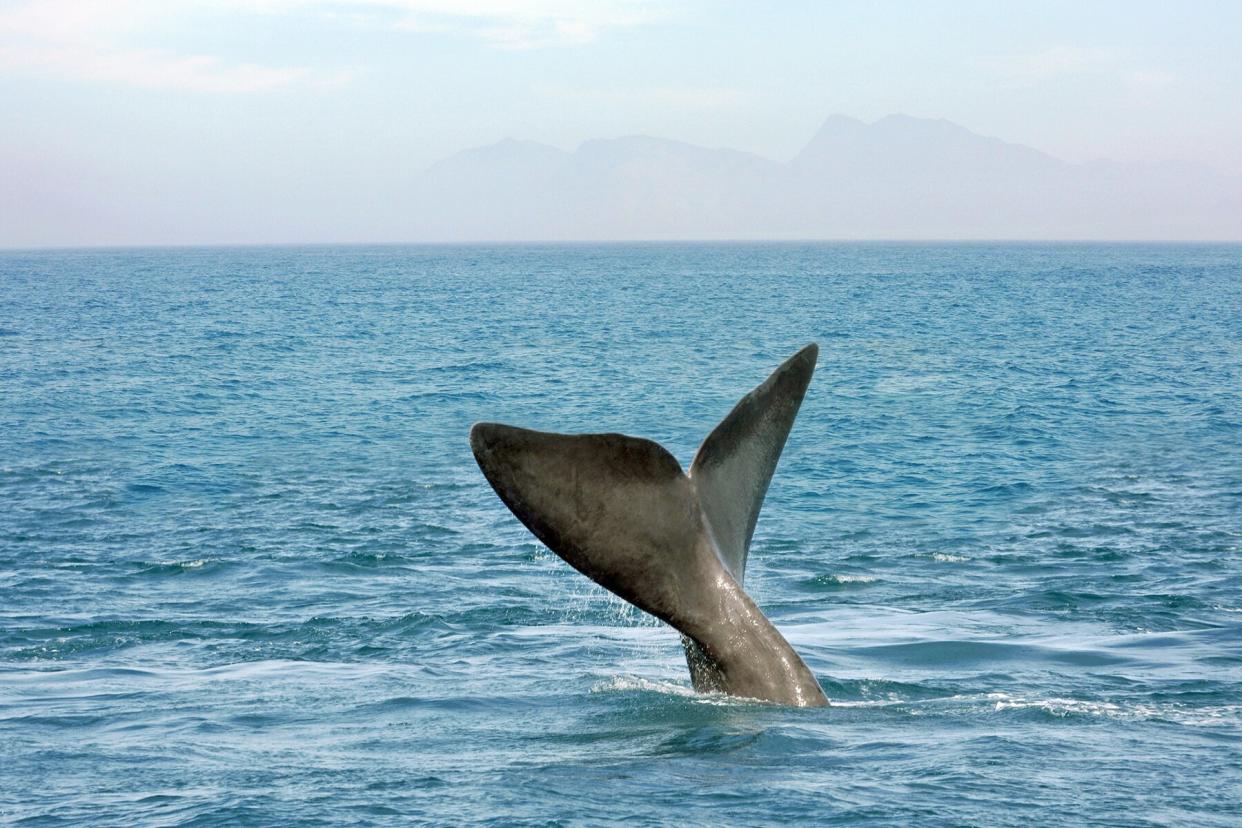Student Captures Incredible Footage of Whale Giving Birth Off Coast of South Africa

oversnap/Getty Images
While on a break from their PhD work, two whale research students experienced the "most emotionally-charged" moment of their lives on a whale watch off the coast of South Africa.
Cynthia Barile, a PhD candidate from Galway, Ireland, was at a conference in Cape Town, South Africa earlier this month when she and a friend decided to take a break from work and go on a whale watch.
https://twitter.com/cynthia_barile/status/1544373281666514947
On Twitter, Barile described seeing the birth as "an incredible moment, so privileged, probably one of the most emotionally-charged moments of my life. To witness a whale take its first breath, nothing in my life ever made me feel as lucky."
She boarded a Hermanus whale watch boat operated by Southern Right Charters and set sail from New Harbour in South Africa's Cape Whale Coast. While out on the waters, Barile spotted a Southern Right Whale near the surface — and then there were two. Southern Right Charters also posted about the experience on their Facebook page.
Barile is researching bioacoustics and deep-diving cetaceans (the aquatic group of mammals that includes whales, dolphins, and porpoises), so the chance to see a live birth was particularly special.
Peak whale watching season off the Cape Whale Coast runs from June through December, with calving season for the Southern Right Whale typically running from June through August, according to a South Africa tourism site. When calves are born, they can weigh anywhere from 2,200 to 3,300 pounds (1,00 to 1,500 kg) and measure 16 to 20 feet (five to six meters) long.
Southern Right Whales earned their name because, historically, they were the "right" animal for whalers to catch because they were typically found near the surface of the water, according to The MarineBio Conservation Society. It was due to this reputation that the animals were heavily hunted and it is estimated that, before harpooning was banned in 1935, there were fewer than 300 Right Whales left in the wild.
Today, the animals are still considered endangered under the Endangered Species Act, according to the National Oceanic and Atmospheric Administration (NOAA).
Cailey Rizzo is a contributing writer for Travel + Leisure, currently based in Brooklyn. You can find her on Twitter, Instagram, or at caileyrizzo.com.

